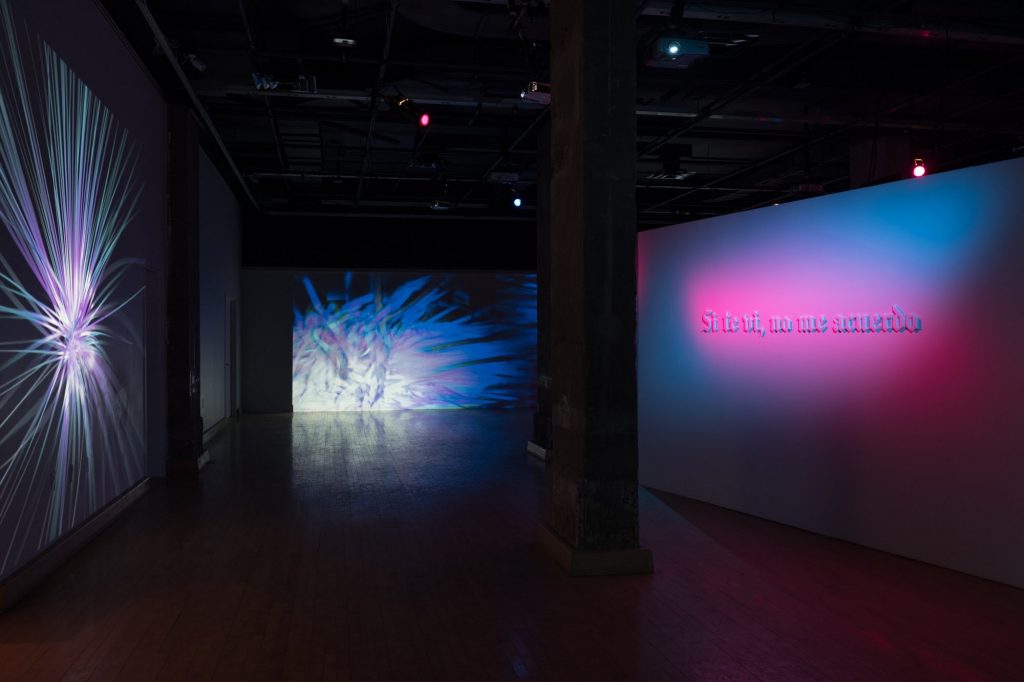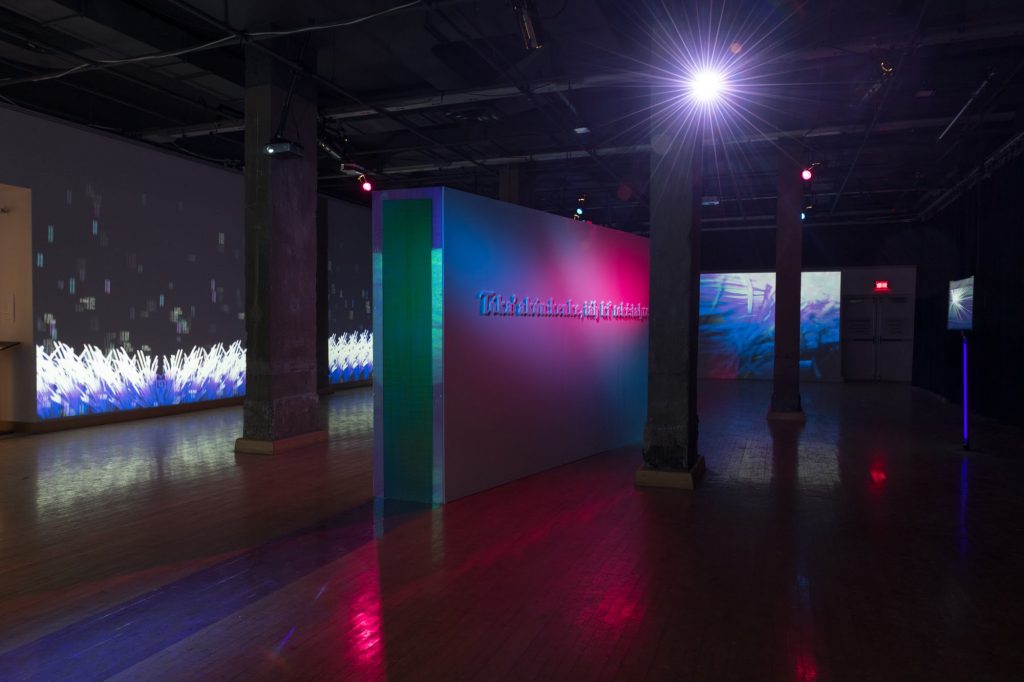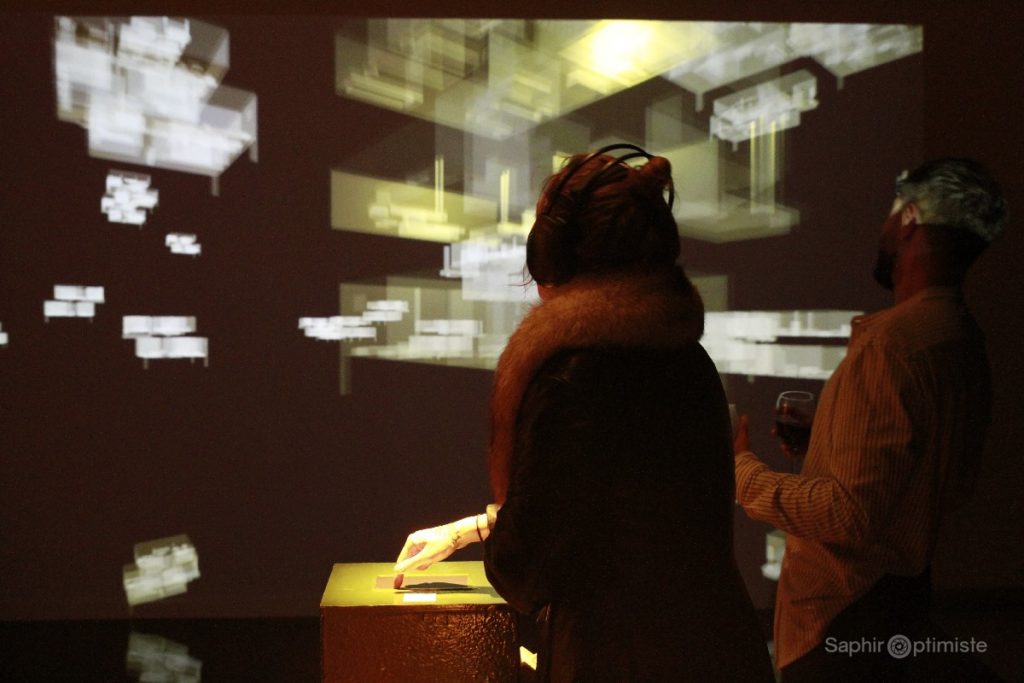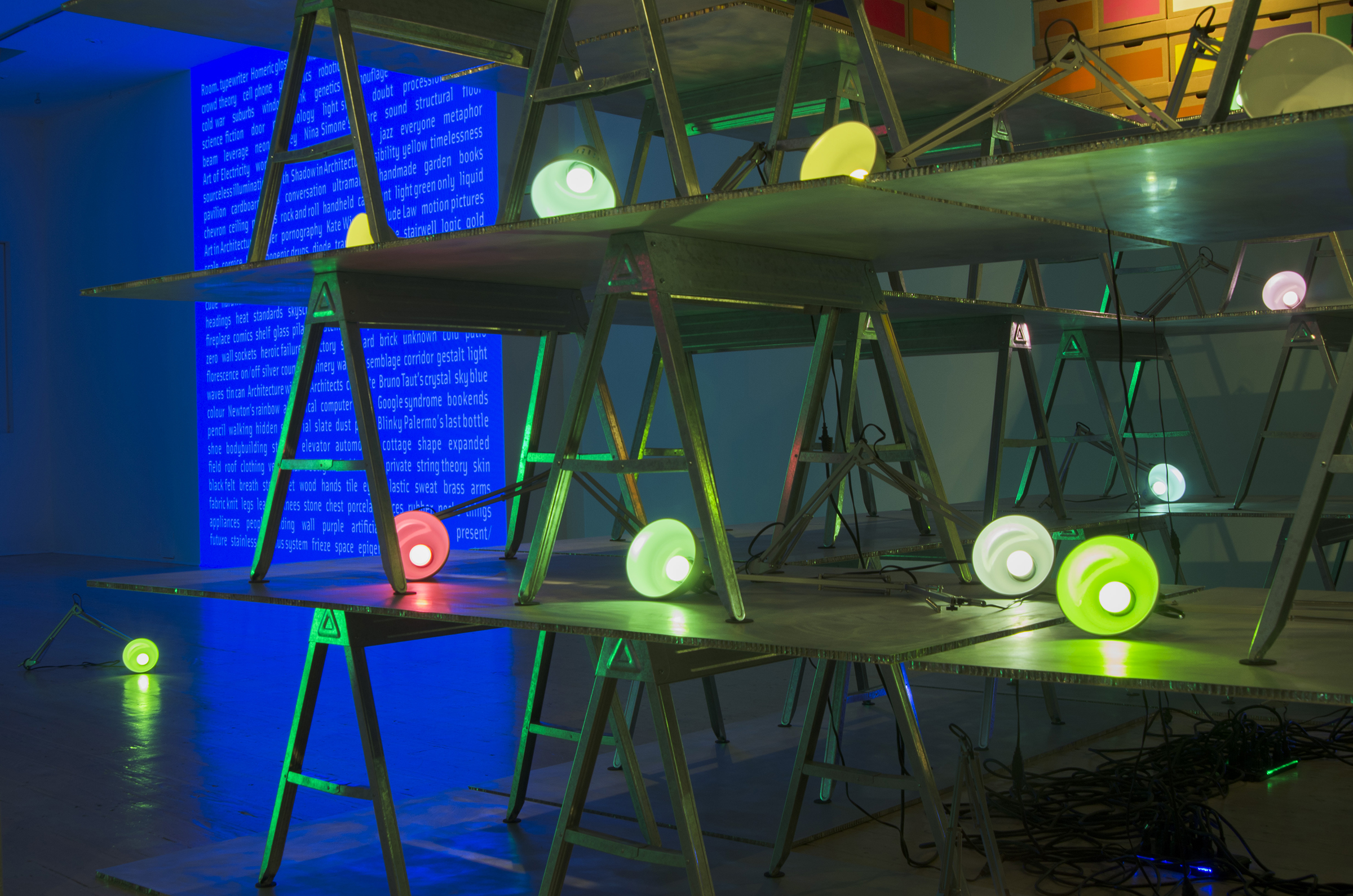CIRCLE UVic presents a discussion with book’s editor, Dr. Nancy J. Turner and contributors to the book.
November 18th 2020
4:00 PM -6:00 PM
CIRCLE UVic presents a discussion with book’s editor, Dr. Nancy J. Turner and contributors to the book.
November 18th 2020
4:00 PM -6:00 PM

Elastic Spaces directors, Leila Sujir (Concordia University) and Anthony Head (Bath Spa University), have contributed a chapter to the recently published book, Practices of Projection: Histories and Technologies edited by Gabriel Menotti and Virginia Crisp by Oxford University Press.
To many, the technological aspects of projection often go unnoticed, only brought to attention during moments of crisis or malfunction. For example, when a movie theater projector falters, the audience suddenly looks toward the back of the theater to see a sign of mechanical failure. The history of cinema similarly shows that the attention to projection has been most focused when the whole medium is hanging in suspension. During Hollywood’s economic consolidation in the ’30s, projection defined the ways that sync-sound technologies could be deployed within the medium. Most recently, the digitization of cinema repeated this process as technology was reworked to facilitate mobility. These examples show how projection continually speaks to the rearrangement of media technology. Projection therefore needs to be examined as a pivotal element in the future of visual media’s technological transition. In Practices of Projection: Histories and Technologies, volume editors Gabriel Menotti and Virginia Crisp address the cultural and technological significance of projection. Throughout the volume, chapters reiterate that projection cannot, and must not, be reduced to its cinematic functions alone. Borrowing media theorist Siegfried Zielinksi’s definition, Menotti and Crisp refer to projection as the “heterogeneous array of artefacts, technical systems, and particularly visual praxes of experimentation and of culture.” From this, readers can understand the performative character of the moving image and the labor of the different actors involved in the utterance of the film text. Projection is not the same everywhere, nor equal all the time. Its systems are in permanent interaction with environmental circumstances, neighboring structures, local cultures, and social economies. Thus the idea of projection as a universal, fully autonomous operation cannot hold. Each occurrence of projection adds nuance to a wider understanding of film screening technologies.
| ISBN | 019093414X, 9780190934149 |


Photos x Paul Litherland
MFA alumni and current Elastic Spaces’ visiting scholar, Santiago Tavera, along his collaborator, Laura Acosta are currently exhibiting their new work, The Novels of Elsgüer (Episode 5); If I saw you, I don’t remember, at MAI – Montréal, Arts Interculturels.
February 8th – March 7th, 2020 Vernissage: February 8th, 2020 at 7:00pm
The Novels of Elsgüer (Episode 5); If I saw you, I don’t remember is an immersive audiovisual installation and performance piece that translates the movements of an unseen body into visual data in the form of hairlike filament animations, intermittent reflections, and flickering shadows. As a sensorial experience, this work asks how different individuals – visible or not- have the potential to create new spaces, raising questions on perception of visibility, inclusion and exclusion. This is the fifth episode in a series of transdisciplinary installations co-created by Colombian-Canadian artists Santiago Tavera and Laura Acosta since 2015.


Photos x Franck Billaud
In 2018 visiting scholar, Santiago Tavera was part of Passages Convergents, an exhibition that was selected for the Conseil des arts de Montréal Touring program / CAM en Tournée.
The first exhibition opens this Thursday, Jan. 23 with a vernissage at the Maison de la culture Notre-Dame-de-Grâce in Montréal at 5:30pm.
January 24th, 2020 – March 29th, 2020 Vernissage: January 23rd, 2020 at 5:30pm

https://www.youraga.ca/exhibitions/rebellious
Alberta women artists responded to the 1980s with rebellion, provocation and activism. This exhibition reveals the shifting mores of the most tumultuous era in Alberta’s history and includes work by the most influential Alberta artists of the 1980s who continue to shape Canadian art. These artists pushed boundaries with their methods of working, their subject matter, and by expanding the ways in which one could be an artist. Utilizing a range of tactics from satire and humour to social critique these artists exposed and worked against established artistic and societal conventions alike. Don’t miss this exhibition featuring the works of strong Alberta women artists of the 1980s, who significantly contributed to the contemporary landscape of Alberta art.
Organized by the Art Gallery of Alberta. Curated by Lindsey Sharman. Supported by artist patrons Maggie & John Mitchell, Bonnie Abel, Marianne & Allan Scott, Annika Nordhagen & James Wolfli, Marcia & Willem Langenberg, and Edward Stidworthy Johnson.
Sandra Bromley, Catherine Burgess, Isla Burns, Joane Cardinal Schubert, RCA, Vera Gartley, Alexandra Haeseker, RCA, Joice M. Hall, Faye HeavyShield, Liz Ingram, Mary Joyce, Toyo Kawamura, Jane Kidd, Lylian Klimek, Pauline McGeorge, Rita McKeough, Katie Ohe, Lyndal Osborne, Jane Ash Poitras, CM RCA, Teresa Posyniak, Mary Scott, Arlene Stamp, Leila Sujir, Carroll Taylor-Lindoe, Wendy Toogood
Curator
Lindsey V. Sharman is Curator of the Art Gallery of Alberta. She has studied Art History and Curating in Canada, England, Switzerland and Austria, earning degrees from the University of Saskatchewan and the University of the Arts, Zurich. From 2012-2018 she was the first curator of the Founders’ Gallery at the Military Museums in Calgary, an academic appointment through the University of Calgary. Her primary area of research is politically and socially engaged art practice. Curatorial projects of note include TRENCH, a durational performance by Adrian Stimson; Felled Trees, an exhibition deconstructing national identity at Canada House, London; Gassed Redux by Adad Hannah; and the nationally touring retrospective The Writing on the Wall: Works of Dr. Joane Cardinal Schubert


Artists in Conversation and Opening Reception
Location:
Surrey Art Gallery, 13750 88 Avenue
Date & Time:
September 21, 2019
6:30 PM – 9:00 PM
Artists: Faisal Anwar, Helma Sawatzky, Leila Sujir, Lawrence Paul Yuxweluptun and Paisley Smith, Robert Youds
Curator: Jordan Strom
Examine the complex relationship between computer technology and nature through digital art.

Reblog from City of Surrey :
The digital world changes as much as the natural world.
To mark the past 20 years of digital art programming, the Gallery is presenting new and recent work from leading artists in this field. Through large-scale images and environments, the artists invite visitors to question the limits of technology and nature.
In Data Mulch, Helma Sawatzky digitally stitches together dozens of photographs of a brimming compost bin at Granville Island Public Market. This market is one of Vancouver’s most celebrated sites of sustainable food and design. In addition to highlighting food waste, the artist shows how excess, accumulation, waste, and decay also mark our contemporary digital condition. As with organic waste, if we pay attention to our digital garbage, we can reclaim it to grow and harness new life and images for the future.
Faisal Anwar’s massive video CharBagh uses social media to generate a Persian-style Islamic garden known as char bagh (four gardens). This interactive artwork grows out of Anwar’s workshops with Surrey residents who took photos related to sustainable food production, climate change, and nature. Using algorithms, the artist morphs these photos into ornate geometric designs. This project exemplifies how social media can be a tool for positive social change. A variation of this artwork will play on UrbanScreen this fall.
Robert Youds explores the garden in a different manner in For Everyone a Fountain. Using computer software, he translates photographs of the iconic Butchart Gardens in Victoria, British Columbia into coloured light sequences spanning the four seasons. These images appear in a tower of gleaming metal building and office materials. Youds creates a compelling space that collapses the boundaries between architecture and nature, work and leisure, image and object, utopia and dystopia.
In Unceded Territories, VR artist Paisley Smith teams up with painter and sculptor Lawrence Paul Yuxweluptun. Their virtual reality game invites participants to move through different natural landscapes inspired by Yuxweluptun’s bold paintings of colonization in British Columbia. As people play the game, their presence leads to sinister consequences such as forest fires and oil spills. The VR component of this installation is available for public viewing Thursdays between 3pm and 7pm.
On a similar note, Leila Sujir’s Forest Breath highlights nature as a space of spiritual connection and renewal that needs protection. She uses stereoscopic 3D video to show a section of dense woodland on Canada’s West Coast that is under threat of deforestation. The ethereal imagery encourages viewers to reflect on old-growth forests in relationship to cultural history, personal health, and mortality.
Photo Credits from top to bottom: - Robert Youds, Installation detail of For Everyone a Fountain presented at Open Space, Victoria, 2017, aluminum panels and sawhorses, desk lamps, and electronics. Photo by Tara Nicholson. - Leila Sujir, Forest Breath, 2018, stereoscopic 3D video lightbox with stereo audio.


Leila Sujir, Aerial (still), 2019. Digital IMAX, 9 min 20 sec. Courtesy the artist.

© 2025 Elastic Spaces
Theme by Anders Noren — Up ↑